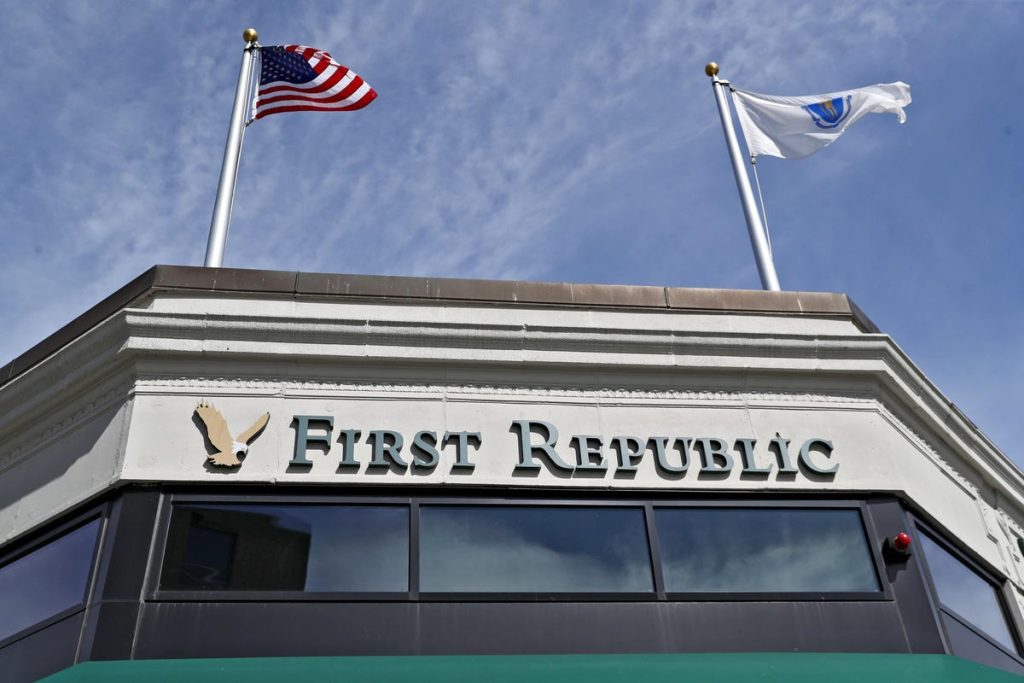Few things inspire less confidence in investors and analysts than to tell us that you will not be giving earnings guidance about the future and that you will not be taking any questions.
“Given the events of March, we are withdrawing all previously communicated financial guidance. Please note that there will be no question-and-answer session following our prepared remarks,” said Mike Ioanilli, the vice president and director of investor relations of First Republic Bank, on an earnings call Monday.
The entire call, during which the CEO and president Mike Roffler speedily read prepared remarks, took about 12 minutes. I cannot recall hearing such a short call since perhaps the financial crisis.
Before the earnings call, First Republic’s stock price had risen to $16; it has now declined by almost 21% to $12.68 before the market has even opened on Tuesday. Since March 8, when Silicon Valley Bank’s implosion became apparent, First Republic Bank’s stock has fallen 89%.
It is imperative that the bank’s executives come forward and explain to market participants what is their credible plan to turn the bank around. The plan needs to include specifics about how the bank will increase deposits, sell assets, and the time line for a balance sheet restructuring. It is when an organization is in a crisis — like what First Republic is going through — that we find out what management is really like.
Deposits Plunged
In a matter of a few days in March, First Republic Bank’s funding model has dramatically changed. Monday’s earnings release showed that even with $30 billion in deposits from America’s largest 11 banks, First Republic reported deposits of only $104.5 billion in the first quarter of 2023. This is a significant decline of almost 41% from the fourth quarter of 2022, and a decline of 35% when compared to the first quarter of 2022. The steep decline is even more astounding considering that the deposit outflows this quarter overwhelmingly happened starting on March 8th when Silicon Valley Bank’s troubles roiled the market. While many other regional banks lost deposits as well, the decline at First Republic was far more significant than at other regional banks.
To make up for the dramatic loss of deposits, First Republic significantly increased its short-term borrowings and loans from the Federal Reserve Discount Window, and Federal Home Loan Bank Board.
The bank increased its total borrowing by 489% from the last quarter of 2022 and 1,140% in comparison to the first quarter in 2022. In a matter of a couple of weeks, First Republic has gone from having deposits represent 91% of its liabilities to that level now being less than 50%.
This massive change in the bank’s funding has not come cheaply. The bank’s interest expense rose by almost 86%. Unfortunately, due to its poor earnings performance and recent credit downgrades, First Republic’s cost of borrowing is likely to continue rising which means continued pressure on the banks net income.
Earnings
I heard many mixed messages during the earnings call. “We are taking steps to meaningfully reduce our expenses to align with our focus on reducing the size of the balance sheet,” said Roffler, the chief executive and president. While First Republic will likely be able to reduce expenses by decreasing the size of the balance sheet, even more earnings are likely to be sacrificed by selling assets such as loans or securities. And if the bank has to sell some of its held-to-maturity assets, given that many are mortgages and bonds, higher interest rates now will mean that the bank will have to take realized losses.
Roffler also said that management plans to decrease loan balances to correspond with the bank’s reduced reliance on uninsured deposits. “We are doing so by moderating our loan volumes and we are focusing on originating loans to sell in the secondary market.”
As soon as I heard, “originating loans to sell,” I took it as a warning signal that we should question whether good underwriting standards will be enforced. I would hope by now that the 2007-2009 financial crisis taught us that when banks originate loans to sell them, they are not worried about borrowers’ credit quality. The risk will not be on the bank’s balance sheet, but risk never disappears. It gets transferred to the investor who buys the securitization backed by those loans.
First Republic’s CEO also announced that management will reduce the workforce by 20% to 25% in the second quarter. This action will also eventually reduce expenses. Yet, it is unclear who exactly will be laid off. If it is the money makers or those who know where the skeletons are buried, these layoffs also will make it harder for the bank to increase its earnings. And how productive can we realistically expect the other professionals at First Republic to be, as they watch their colleagues clean out their desks?
Unfortunately, until management comes out and gives more details about what its plan is, market participants will continue speculating about what is really happening at First Republic.
Other Recent Articles By This Author:
First Republic Bank’s Financial Ratios Will Reveal Serious Trouble
Regional Banks’ Financial Results Fail To Impress Investors
What To Watch For With U.S. Regional Banks This Week
Big U.S. Banks Are Preparing For An Impending Recession
Investors Eyes Should Be On Leveraged Finance Markets
Deutsche Bank Should Disclose Its Current Liquidity Levels To Investors
From Ferdinand Marcos To Russian Oligarchs, Troubled Credit Suisse Is A Repeat Offender
How Trump’s Deregulation Sowed the Seeds for Silicon Valley Bank’s Demise
Warning Signals About Silicon Valley Bank Were All Around Us
High Interest Rates Will Continue To Challenge Most Sectors Of The Economy
Leveraged Loan Default Volume In The U.S. Has Tripled This Year
Probability Of Default Is Rising For High Yield Bonds And Leveraged Loans
The U.S. Leveraged Finance Market Is At A Record $3 Trillion
Read the full article here
